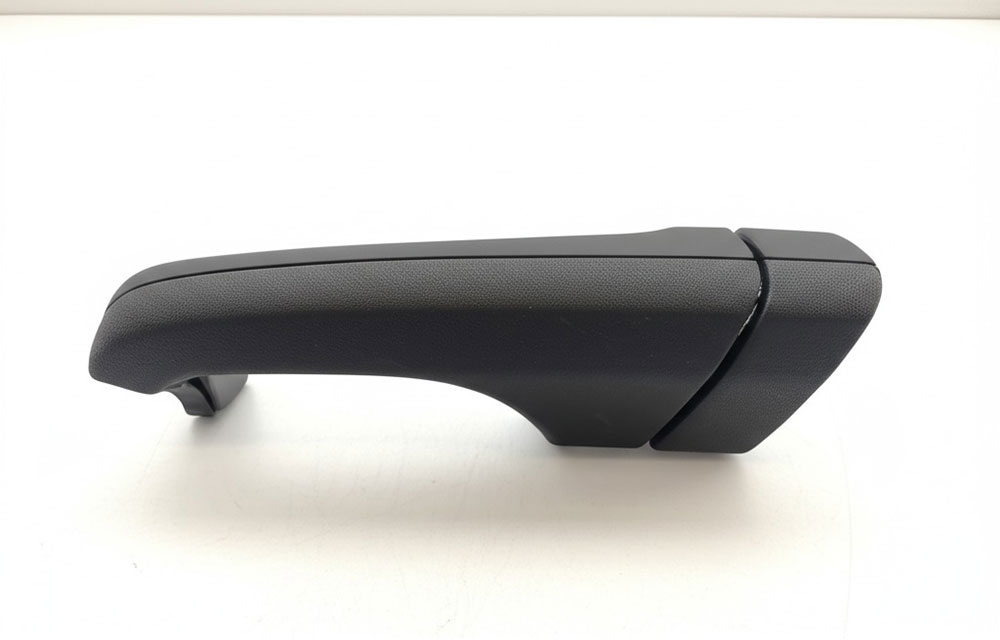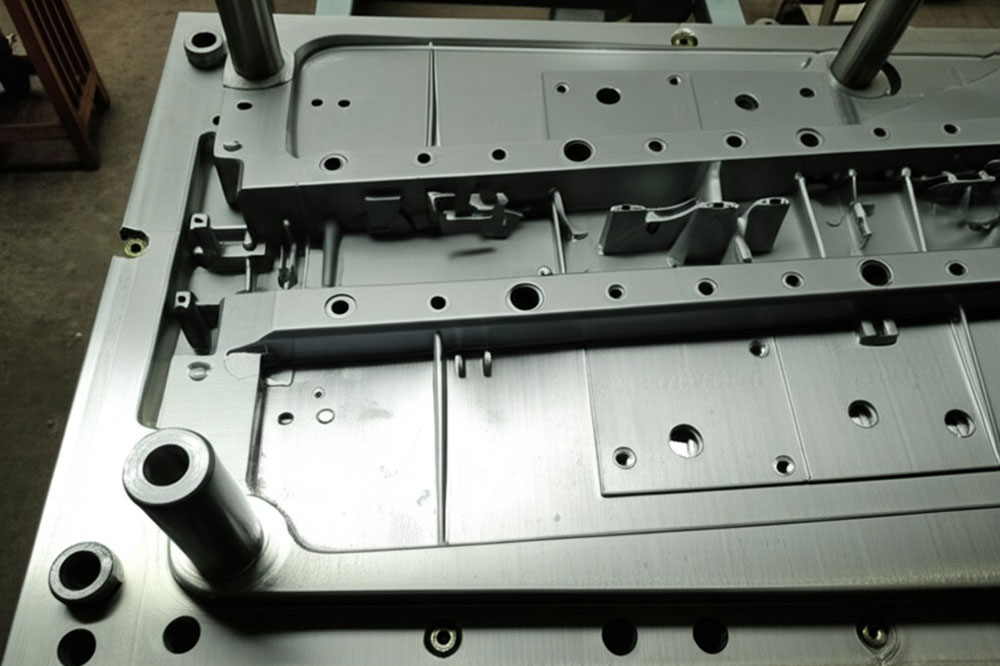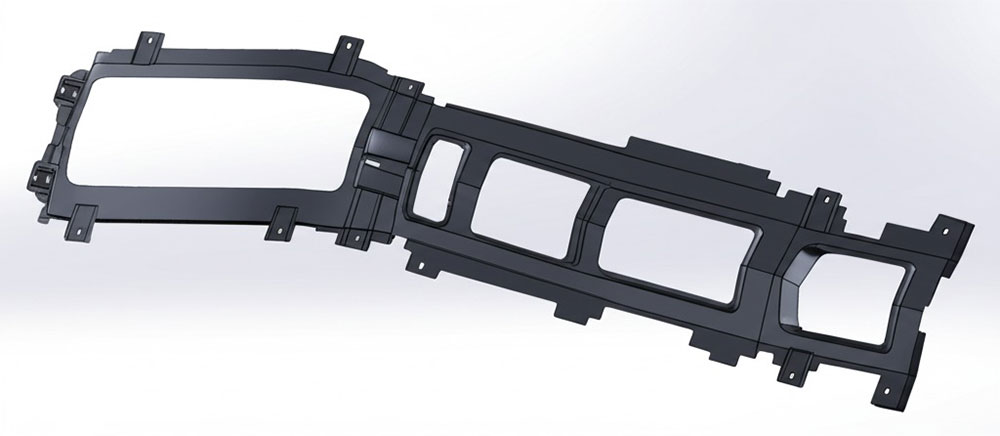How to Choose Cost-Effective Gas Assist Injection Molding Suppliers for Advanced Manufacturing
Introduction:
In today’s competitive manufacturing landscape, efficiency and quality are key to success. One process that has garnered significant attention is gas assist injection molding, particularly for producing large, complex plastic parts with superior surface finishes and structural integrity. This technology is increasingly popular among gas assist injection molding suppliers as it allows companies to save materials, reduce cycle times, and lower the pressure requirements during production.
Gas assist injection molding involves introducing a controlled flow of gas (typically nitrogen or carbon dioxide) into the mold during the injection process. This innovative method forms hollow sections within thick-walled components, which not only reduces material usage but also shortens the cooling phase. The result is a high-quality product with a consistent finish and excellent structural strength—all while lowering costs and improving production efficiency.
This article explores the benefits, technical details, and best practices for selecting the right gas assist injection molding suppliers. We will discuss the working principles of gas assist injection molding, its specific applications (such as large handles, equipment covers, doors, bezels, cabinets, and enclosures), and provide insights on how to evaluate suppliers to ensure the highest return on investment. Additionally, we will detail why partnering with Huazhi Technology can solve your manufacturing challenges. By the end of this guide, you will be better equipped to make an informed decision that aligns with your engineering and cost objectives.
What is Gas Assist Injection Molding?
Gas assist injection molding is an advanced injection molding process that uses pressurized gas to assist in the flow of molten plastic. Unlike conventional injection molding, where the entire cavity is filled with molten plastic, gas assist injection molding injects a controlled stream of gas into the mold after an initial fill. This process creates hollow channels or cores within the molded part, leading to numerous benefits.
Technical Process Overview
-
Initial Resin Injection: First, the machine injects molten plastic into the mold cavity until about 70–80% full.
-
Gas Injection Stage: Once the resin fills the critical sections, a controlled amount of inert gas (nitrogen or carbon dioxide) is injected at high pressure. The gas penetrates the molten plastic, pushing the resin outward toward the mold walls.
-
Cooling and Solidification: As the resin cools, a hollow structure is formed inside the thick-walled part. This hollow area not only saves material but also improves the part’s cooling efficiency, leading to shorter cycle times and better part quality.
-
Ejection: After the resin solidifies, the mold opens and the finished part is ejected.
Key Technical Advantages
-
Material Savings: By creating hollow sections, manufacturers reduce the overall plastic volume needed, which directly lowers material costs.
-
Cycle Time Reduction: Enhanced cooling efficiency due to the thinner wall sections results in faster cycle times.
-
Pressure Reduction: The gas helps distribute pressure evenly across the mold cavity, reducing the need for excessive injection pressure and minimizing internal stresses.
-
Superior Surface Finish: The gas assist process helps maintain excellent surface quality by mitigating common issues such as sink marks and internal voids.
-
Versatility: This method is ideal for large and complex parts found in automotive and consumer applications, where design complexity and aesthetics are critical.
Application Scope
Gas assist injection molding is particularly effective for manufacturing parts that require a combination of strength and lightweight construction, such as:
-
Automotive components (e.g., bumpers, door panels, and dashboards)
-
Consumer electronics housings
-
Industrial equipment covers
-
Cabinet enclosures and large handles
By understanding the process in depth, companies can better appreciate the transformative benefits that gas assist injection molding brings to large-scale, high-complexity parts manufacturing.
Advantages of Gas Assist Injection Molding
Outsourcing your plastic molding to specialized gas assist injection molding suppliers can yield numerous advantages. This process offers a unique blend of performance benefits that enhance both product quality and production efficiency.
Cost Reduction and Material Efficiency
One of the primary benefits of gas assist injection molding is the significant reduction in material usage. By creating hollow channels within the parts, the process reduces the overall material requirement. This efficiency leads to a lower material cost per part, which is crucial for high-volume production. Furthermore, the lightweight nature of the finished parts can contribute to fuel efficiency and reduced shipping costs, particularly in the automotive industry.
Shorter Cycle Times
The innovative cooling strategy inherent in gas assist injection molding leverages thinner, hollow walls that cool faster than solid parts. This results in a substantial reduction in cycle times, thereby increasing throughput and overall production efficiency. For automakers and other high-demand industries, faster cycle times translate directly to higher productivity and reduced lead times.
Improved Part Quality and Surface Finish
Gas assist injection molding ensures a uniform material distribution across the mold, which prevents common defects such as sink marks, warping, and internal voids. The ability to create parts with a superior surface finish is critical in applications where aesthetics and precision are paramount. Automotive components like bumpers, trim panels, and interior elements benefit greatly from such a smooth, flawless finish.
Enhanced Structural Integrity and Design Flexibility
Despite reducing material usage, gas assist injection molding does not compromise part strength. The method allows for the reinforcement of critical areas while reducing overall weight. Additionally, this process enables the production of intricate designs and complex geometries that would be challenging to achieve with traditional injection molding techniques. This design flexibility is highly valued in industries that require innovative, high-performance parts.
Environmental Impact and Sustainability
With growing concerns about sustainability, gas assist injection molding offers environmental benefits. By reducing plastic consumption and energy usage (thanks to quicker cooling times), the process contributes to more sustainable manufacturing practices. Companies that partner with gas assist injection molding suppliers can meet both production demands and environmental regulations, enhancing their corporate social responsibility (CSR) profiles.
Technical Integration & Advanced Process Control
Modern gas assist injection molding machines are equipped with advanced process control systems that enable real-time monitoring and adjustments of pressure, temperature, and gas flow. This high degree of control ensures consistent part quality and minimizes variability. Such technological integration supports a higher degree of automation, reducing human error and further enhancing production efficiency.
Applications of Gas Assist Injection Molding in Automotive and Beyond
The versatility of gas assist injection molding is one of its most compelling attributes. This process is tailored for creating large, complex parts with high aesthetic and functional requirements. It finds extensive application in various sectors, most notably in the automotive industry.

Automotive Components
In automotive manufacturing, gas assist injection molding is used to produce components that need to be both lightweight and durable. For instance:
-
Bumpers: The process can create bumpers with integrated hollow structures, which absorb impact efficiently while reducing overall weight.
-
Door Panels: Intricate designs and high-quality finishes are achievable, ensuring both visual appeal and longevity.
-
Dashboard Elements: Advanced polymer injection techniques deliver precision and uniformity in design, essential for modern car interiors.
-
Engine Covers: The hollow structures reduce weight and improve thermal management, directly contributing to enhanced fuel efficiency.
Consumer Electronics and Industrial Applications
Beyond automotive, the process is vital in consumer electronics, where precision and lightweight components are essential. Applications include:
-
Device Housings: For smartphones and laptops, where intricate detail and high durability are required.
-
Large Equipment Covers: In industrial settings, plastic injection molded covers offer both protection and design flexibility.
Technical Case Example
A leading automotive manufacturer recently transitioned to gas assist injection molding for a new range of bumpers. By implementing gas assist techniques, the manufacturer reduced material consumption by 20% while achieving a 15% reduction in cycle time. Detailed thermal analysis and simulation were used to optimize the cooling channel design in the molds, ensuring uniform part quality and high structural integrity.
Benefits for Design Innovation
This technology allows for the integration of multi-material structures, enabling manufacturers to design components with enhanced functionalities, such as impact resistance combined with improved aesthetics. Advanced simulation software (e.g., Moldflow) is often employed to predict material flow and optimize mold design, ensuring that every cavity is filled uniformly with the correct amount of gas assist.
Technical Considerations When Partnering with Gas Assist Injection Molding Suppliers
When evaluating potential gas assist injection molding suppliers, technical expertise and process control capabilities are paramount. The following criteria can help you assess whether a supplier meets your production requirements:
1. Advanced Equipment and Process Capabilities
-
State-of-the-Art Machines: Suppliers should use modern injection molding machines that support gas assist technology, with precision control over gas flow, injection speed, and mold temperature.
-
Automation & Robotics: Check if the supplier integrates robotics to optimize material handling and ensure consistent cycle times.
-
Process Monitoring Systems: Real-time monitoring systems (e.g., sensors and IoT devices) help maintain ideal processing conditions and enable proactive maintenance.
2. Design Engineering and Simulation Expertise
-
CAD/CAM Integration: The supplier should excel in creating detailed 3D mold designs and using simulation tools like Moldflow to predict and optimize the gas assist process.
-
Cooling Channel Design: Advanced suppliers employ conformal cooling designs that reduce thermal gradients and improve cycle times.
-
Prototyping Capabilities: The ability to rapidly prototype molds using CNC machining or 3D printing is essential for testing designs and making iterative improvements.
3. Quality Assurance & Certifications
-
Industry Certifications: Look for ISO 9001, IATF 16949, or other relevant certifications which indicate adherence to rigorous quality standards.
-
End-to-End Inspections: Comprehensive quality checks at multiple production stages—from mold fabrication to final part inspection—ensures consistent high quality.
-
Data-Driven Process Optimization: Suppliers employing advanced analytics to continuously improve the molding process provide a competitive edge.
4. Customization and Flexibility
-
Tailored Solutions: The ideal supplier offers flexible design and production capabilities to accommodate custom requirements. They should be able to adjust process parameters to meet varied design specifications and part functionalities.
-
Collaborative Approach: Engage with suppliers that work closely with clients during the design and prototyping phases to ensure the final product meets technical and performance standards.
Why Choose Huazhi Technology for Gas Assist Injection Molding Suppliers?
At Huazhi Technology, we pride ourselves on providing comprehensive gas assist injection molding solutions tailored to meet the demands of high-performance industries. Our commitment to quality, innovation, and customer satisfaction distinguishes us as a preferred partner among gas assist injection molding suppliers.
Our Competitive Advantages:
-
Extensive Industry Experience: With over 15 years in mold manufacturing, we have developed a deep understanding of the technical intricacies involved in gas assist injection molding.
-
State-of-the-Art Facilities: Our cutting-edge manufacturing facilities feature advanced CNC machines, automated injection molding systems, and quality control laboratories that ensure precision and consistency.
-
Custom Design Capabilities: We work hand-in-hand with clients to design and optimize molds for complex components, ensuring that every project is completed to the highest standards.
-
Cost Efficiency: By leveraging a combination of advanced technology and efficient production processes, we are able to offer cost-effective solutions without compromising on quality.
-
Quality Assurance: Our products adhere to international quality standards such as ISO 9001 and IATF 16949, ensuring that every mold we produce meets strict industry requirements.
-
Comprehensive Support: From initial consultation and design to production, maintenance, and after-sales service, our team is dedicated to ensuring that your manufacturing goals are achieved.
Customer Testimonials:
Clients consistently report improved cycle times, enhanced part quality, and significant cost savings when partnering with Huazhi. We serve industries ranging from automotive and consumer electronics to industrial equipment, with each project reflecting our expertise and attention to detail.
Conclusion
The use of gas assist injection molding offers significant advantages for manufacturing large, complex plastic parts with high-quality surface finishes and reduced material usage. For companies seeking to optimize production efficiency and product quality, partnering with experienced gas assist injection molding suppliers is key.
Through advanced technology, meticulous design, and rigorous quality control, gas assist injection molding not only enhances efficiency but also reduces production costs and environmental impact—without compromising on the structural integrity of the final product.
At Huazhi Technology, we combine over 15 years of industry expertise with state-of-the-art manufacturing and a customer-focused approach to deliver innovative solutions tailored to your specific needs.
📞 Contact Huazhi Technology today to discuss how our gas assist injection molding solutions can transform your production process and boost your competitive edge!
FAQs on Gas Assist Injection Molding Suppliers
Q1: What makes gas assist injection molding ideal for large, complex parts?
Gas assist injection molding uses controlled gas injection to form hollow sections in parts, reducing material usage, cycle times, and required injection pressure while maintaining structural integrity.
Q2: How do I know if my project is suitable for gas assist injection molding?
Projects that involve large, thick-walled parts or require high surface finishes—such as automotive panels, equipment covers, and cabinet components—often benefit from gas assist injection molding.
Q3: What technical certifications should a gas assist injection molding supplier hold?
Look for ISO 9001, IATF 16949, and other relevant industry certifications that guarantee quality control and process reliability.
Q4: Can gas assist injection molding reduce production costs?
Yes, by minimizing plastic usage and cycle times, this process lowers material costs and energy consumption, leading to overall cost savings.
Q5: What type of support does Huazhi Technology offer?
Huazhi provides end-to-end support, including custom design consultations, process optimization, rapid prototyping, and comprehensive after-sales service.
Q6: How does gas assist injection molding improve part quality?
By evenly distributing gas during molding, the process minimizes internal stresses and common defects such as sink marks, resulting in smoother surfaces and enhanced durability.


